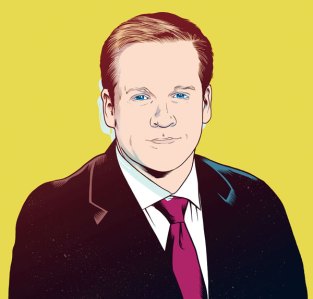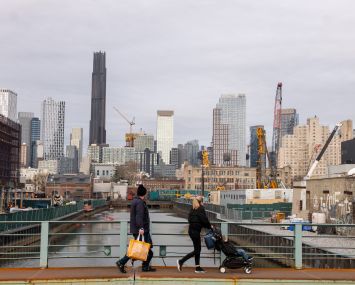Marcus & Millichap’s J.D. Parker on the Multifamily Investment Sales Market
By Jotham Sederstrom March 2, 2012 9:00 am
reprintsThe investment sales market, most brokers agree, has been heating up over the past 12 months. Approximately $25.8 billion in commercial properties changed hands last year, a turnaround that represented an 88 percent increase over 2010. But while the positive uptick is easily verifiable, what happens next for Manhattan’s investment sales market is still up in the air.
Accordingly, The Commercial Observer set out to speak with the real estate industry’s most accomplished capital markets and sales practitioners to learn what’s in store for 2012. Over the next several days, we’ll post interviews with heavy hitters like Richard Baxter of Jones Lang LaSalle, Darcy Stacom and William Shanahan of CBRE, Woody Heller of Studley and Peter Hausperg of Eastern Consolidated. But, first, after the jump, none other than J.D. Parker of Marcus & Millichap (MMI).

The Commercial Observer: Compared to other asset classes, how actively are multifamily buildings trading?
Mr. Parker: It’s the strongest, in my opinion, across the country. We have 85 offices nationwide, and certainly, along with single-tenant net-lease, which has been very strong for us as a firm, multifamily’s really been our strongest sector. Certainly it has pockets nationwide where it’s not strong—parts of southern Florida, Las Vegas, Arizona, southern California—but in markets that are supply constrained like New York City, San Francisco, parts of L.A. and Miami, multifamily has done unbelievably well as the markets rebounded. And it’s often looked at as the safest asset class.
Why?
Because if you have an office building or a retail shopping center you tend to have the rents at those properties make up a larger percentage of your income. So if I’m selling a 70-unit apartment building my risk is diversified across 70 tenants. If I have an office building with 50,000 feet and I have only five tenants, if one leaves 20 percent of my income can go out the window. So because of New York City’s unbelievably low vacancy, which in a properly run asset is going to be somewhere between zero and 2 percent, the demand is so high that there’s no supply in the marketplace and people believe it’s a very, very safe place.
With multifamily assets, did the bottom drop out in the first quarter of 2009, as it did for other asset classes? Or was there a delayed response in the residential sector?
We really saw a significant slow down and headlights approaching—the train coming out of the tunnel to hit us—at the end of the summer in 2008. But because the market moves somewhat slow, and contracts get signed and take a while to close, as soon as the disruption in August and September occurred in 2008 there was a lag time before velocity dropped off significantly. So when you look at the data it’s going to say the market came crumbling down in the first quarter of ’09. But it really happened in the end of the summer and the fall in New York City.
When did you really begin to see multifamily sales activity bounce back?
You saw it bounce back as of the middle of 2010 and heading into the fourth quarter of 2010, and we saw a pretty sharp bounce back off the bottom. And then we saw a pretty nice growth factor on that in 2011, where overall velocity in the market went up. I believe 2010 was somewhere around $14 or $15 billion in terms of total transactions, not just multifamily. And it went up to close to $28 billion last year.
In what neighborhoods are you seeing the most activity in the multifamily sector?
There’s an unbelievable demand right now for core assets in good neighborhoods. So we just closed a property in January at 12 Fifth Avenue, and we had unbelievable demand for that property, where the cap rates are compressed so tightly that stuff’s going to trade in the low to mid 3 cap-rate range on a building like that. But there’s demand out there for every type of product. In terms of multifamily, we do a tremendous amount of business in the outer boroughs. Brooklyn is unbelievably hot. We sold something like 30 apartment buildings there last year, and we have a huge pipeline of business there right now.
Where in Brooklyn are you seeing the most heat?
Williamsburg has been hot and strong ever since the early 2000s, when the tenant base started to gentrify and artists started coming. The other is Bushwick, where the tenant base was largely minority and working class, but because of Williamsburg’s popularity it’s been taken over by the artists. There’s a heavy population that’s moved beyond that first stop on the L train to the next couple of stops. So it’s very, very active over the last couple of years.
How much farther east on the L train do you expect gentrification to happen?
You know, I think the subway line stops on Cooper Street, so that’s my answer.
Jsederstrom@observer.com


